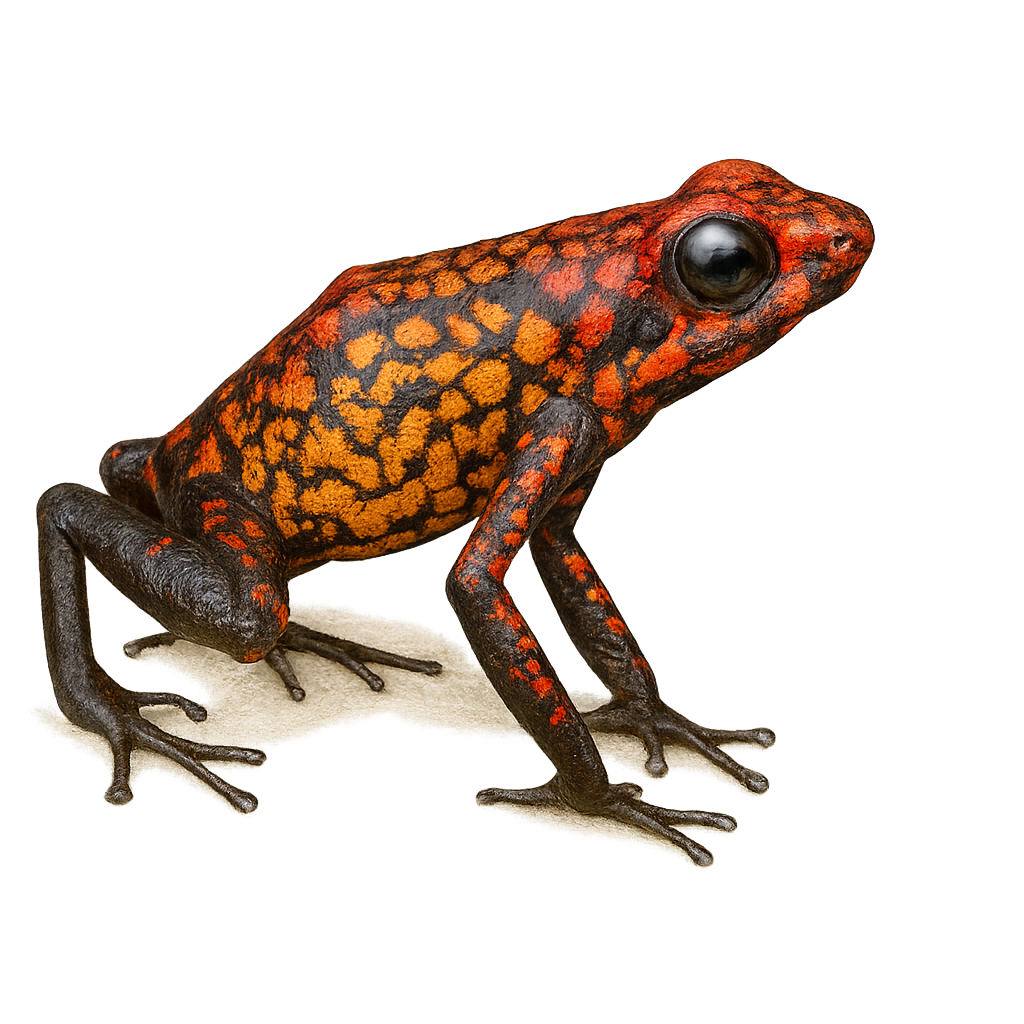Your wildlife photography guide.
Explore the hidden poison frog in detail, study its behavior, prepare your shots.
Where to observe and photograph the hidden poison frog in the wild
Learn where and when to spot the hidden poison frog in the wild, how to identify the species based on distinctive features, and what natural environments it inhabits. The WildlifePhotographer app offers tailored photography tips that reflect the hidden poison frog’s behavior, helping you capture better wildlife images. Explore the full species profile for key information including description, habitat, active periods, and approach techniques.
Hidden poison frog
Scientific name: Oophaga occultator

IUCN Status: Vulnerable
Family: DENDROBATIDAE
Group: Amphibians
Sensitivity to human approach: Suspicious
Minimum approach distance: 3 m
Reproduction period: April to June
Incubation: N/A
Births: May to July
Habitat:
Humid tropical forests, undergrowth, forest edges
Activity period :
Primarily active during the day, with peak activity in the morning and late afternoon.
Identification and description:
The Hidden poison frog, Oophaga occultator, is a fascinating species from the Dendrobatidae family, known for its bright colors and discreet behavior. It primarily inhabits the humid tropical forests of Colombia, often hiding among leaf litter and mosses. This small frog typically measures between 2 and 3 centimeters. It is distinguished by its ability to produce powerful skin toxins, used as a defense mechanism against predators. Due to its limited habitat and increasing deforestation, it is considered vulnerable. Its reproduction is complex, involving parental care where adults transport tadpoles to secure aquatic sites.
Recommended lens:
Macro – adjust based on distance, desired framing (portrait or habitat), and approach conditions.
Photography tips:
To photograph the Hidden poison frog, patience and discretion are key. Use a macro lens to capture the details of its colorful skin and unique patterns. Opt for early morning or late afternoon hours when the light is soft to avoid unwanted glare. Maintain a distance of at least 3 meters to avoid disturbing it and use a tripod to stabilize your camera. Be attentive to movements in the undergrowth, as this frog is often well camouflaged.
The WildlifePhotographer App is coming soon!
Be the first to explore the best nature spots, track rutting seasons, log your observations, and observe more wildlife.
Already 1 432 wildlife lovers subscribed worldwide

